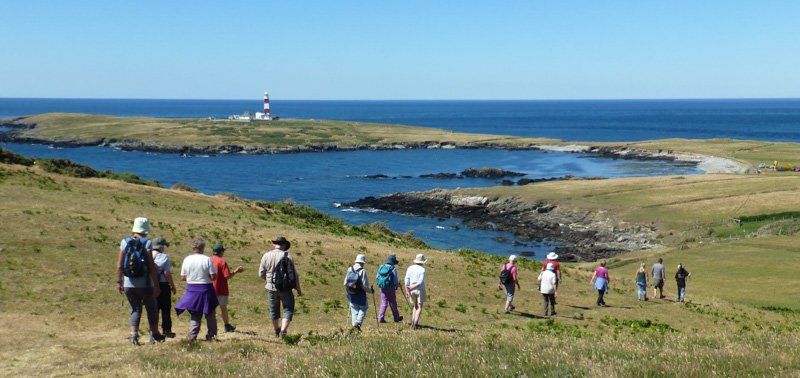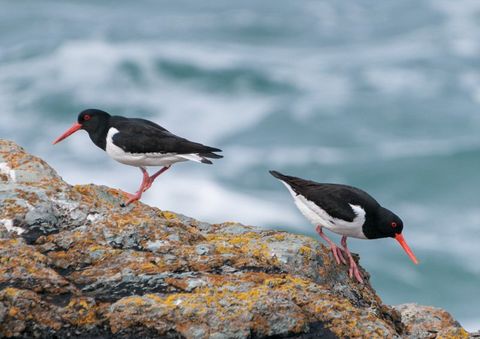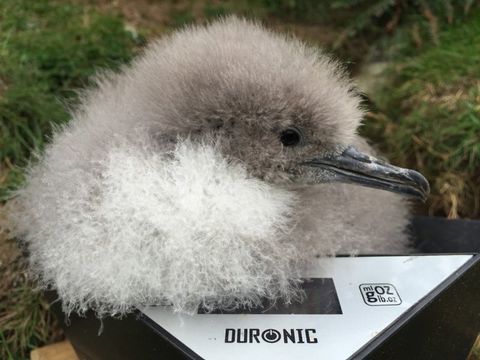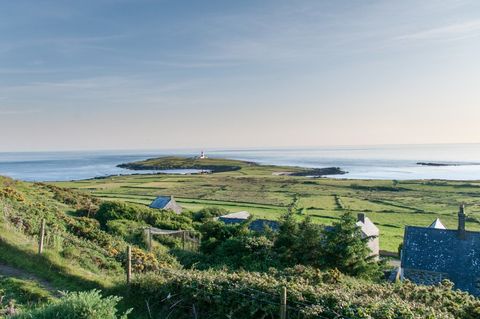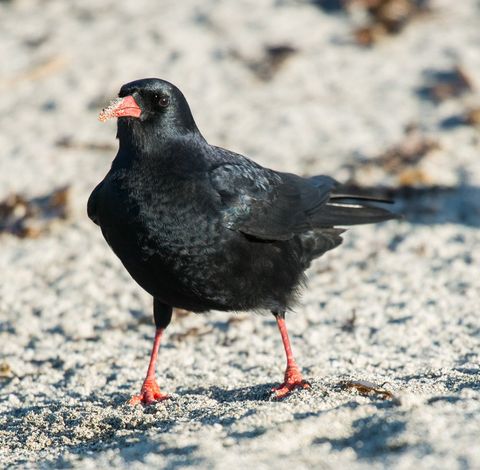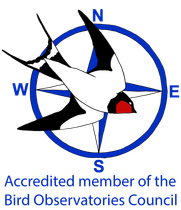About
Bardsey Bird & Field Observatory is one of only two accredited bird observatories in Wales and is one of a network of 20 around the coast of the UK and Ireland. Founded in 1953, the Observatory has been monitoring the island's birds and wildlife ever since.
The Observatory is based in the old farmhouse at Cristin (built by Lord Newborough in 1874). There is accommodation for up to 12 guests from Saturday to Saturday. Everyone is welcome, birder or not! The whole observatory can be booked for group visits.
Bangor University have brought over a group of students as part of their Ecology course and found the Observatory and the island an ideal base: "Our students really enjoy staying at the Observatory to undertake their field work on Bardsey. The Obs staff are always on hand to assist with any queries we have."
The Observatory is based in the old farmhouse at Cristin (built by Lord Newborough in 1874). There is accommodation for up to 12 guests from Saturday to Saturday. Everyone is welcome, birder or not! The whole observatory can be booked for group visits.
Bangor University have brought over a group of students as part of their Ecology course and found the Observatory and the island an ideal base: "Our students really enjoy staying at the Observatory to undertake their field work on Bardsey. The Obs staff are always on hand to assist with any queries we have."
Wildlife
The presence of many rare and scarce species on Bardsey has ensured it has become well protected. It is a National Nature Reserve, Site of Special Scientific Interest (SSSI), Special Protection Area (SPA), an Environmentally Sensitive Area (ESA) and an Area of Outstanding Natural Beauty.
There have been 334 species of birds recorded on the island. Many of these are scarce or rare migrants such as Pied Wheatear, Paddyfield Warbler or Bee-eater. Common breeding birds include 30,000 pairs of Manx Shearwaters, Chough, Puffin, Razorbill, Guillemot, Oystercatcher, Rock Pipit and Wheatear.
The Island is also home to Grey Seals; up to 300 can be seen hauled out in Henllwyn. They breed on the island in small numbers and during September and October seal pups can be seen in sheltered inlets and beaches along the west coast of the island.
There have been 334 species of birds recorded on the island. Many of these are scarce or rare migrants such as Pied Wheatear, Paddyfield Warbler or Bee-eater. Common breeding birds include 30,000 pairs of Manx Shearwaters, Chough, Puffin, Razorbill, Guillemot, Oystercatcher, Rock Pipit and Wheatear.
The Island is also home to Grey Seals; up to 300 can be seen hauled out in Henllwyn. They breed on the island in small numbers and during September and October seal pups can be seen in sheltered inlets and beaches along the west coast of the island.
Our work
Our main objective is to monitor and census the breeding and migratory birds which use the island. Observatory staff undertake a daily census, to which visitors are encouraged to contribute, with a log of the day's sightings taken each evening. Spring and summer are particularly intensive times when the populations of breeding landbirds and seabirds have to be counted.
Breeding birds and migrants are trapped for ringing as part of the National scheme run by the British Trust for Ornithology. The ringing of the breeding seabirds is particularly important as it gives us much more information on how the birds are doing. For instance, we recently had a Manx Shearwater that was 52 years old!
The work of the Observatory is published in an Annual Report, which can be purchased from the Observatory or is free if you become a member of the Observatory. Through more than 50 years of work the Observatory has been able to monitor changes in populations and track shifts in the timing of migration of some of the species of birds passing through the island.
Although our emphasis is ornithological, we also welcome marine biologists, entomologists, geologists and mammalogists to contribute to our research and scientific recording. In 2013 there was much excitement on the island as a pod of Orcas was spotted swimming past the island.
Every morning the moth trap is inspected and moth numbers recorded. New species are still being added on a regular basis, with Elephant Hawk Moth being a recent addition!
Breeding birds and migrants are trapped for ringing as part of the National scheme run by the British Trust for Ornithology. The ringing of the breeding seabirds is particularly important as it gives us much more information on how the birds are doing. For instance, we recently had a Manx Shearwater that was 52 years old!
The work of the Observatory is published in an Annual Report, which can be purchased from the Observatory or is free if you become a member of the Observatory. Through more than 50 years of work the Observatory has been able to monitor changes in populations and track shifts in the timing of migration of some of the species of birds passing through the island.
Although our emphasis is ornithological, we also welcome marine biologists, entomologists, geologists and mammalogists to contribute to our research and scientific recording. In 2013 there was much excitement on the island as a pod of Orcas was spotted swimming past the island.
Every morning the moth trap is inspected and moth numbers recorded. New species are still being added on a regular basis, with Elephant Hawk Moth being a recent addition!
Privacy Policy
We take the privacy of our members and visitors very seriously. Our policy has been drawn up in line with UK legislation and can be found by following the link below.
Privacy policy
Audited accounts
We publish a summary of our audited each year in our annual report, you can view a copy by following the link below.
Audited accounts
AGM minutes
Staff leading a guided nature walk for visitors

